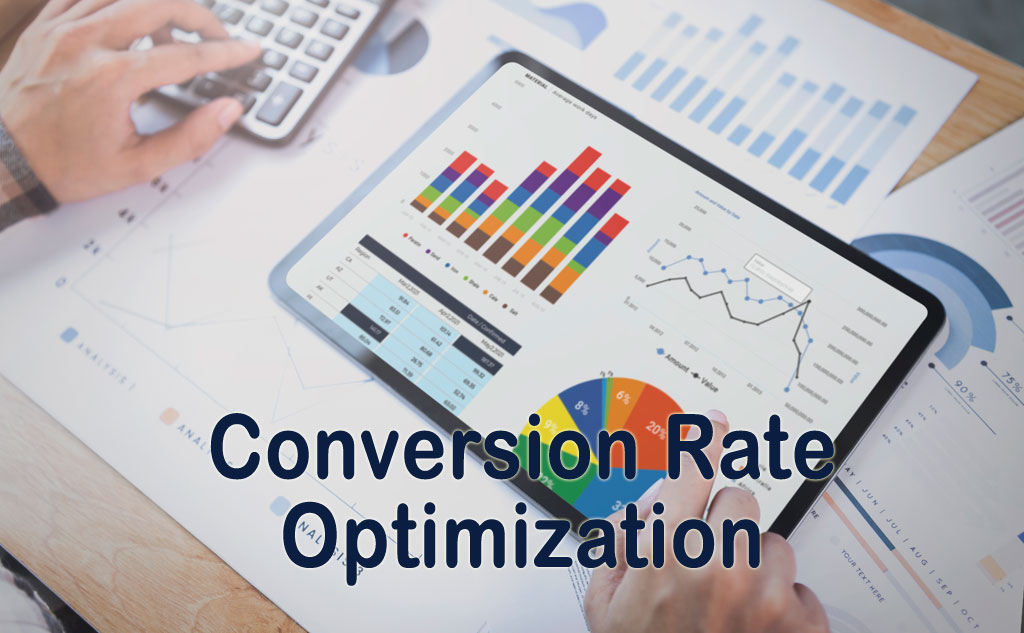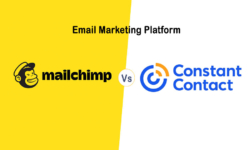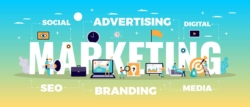If you’re like most business owners, you want to turn your website visitors into customers. That’s why you created your site in the first place, right?
But how do you actually do that? How can you get those people who visit your site to take action that benefits you in some way?
The answer is conversion rate optimization (CRO). CRO is the practice of optimising your website to convert more visitors into customers. It’s an important part of any marketing strategy and one that can be done relatively easily if you know what strategies to use. In this article, we’ll look at 10 of the best strategies for turning visitors into customers fast.
Table of Contents
- What is convert rate optimization?
- 10 Conversion Rate Optimization Strategies
- #1. Offer Valuable Content and Resources
- #2. Optimise Your Landing Pages
- #3. Provide Clear Calls-to-Action
- #4. Use Persuasive Copywriting
- #5. Offer Free Trials or Samples
- #6. Retarget Your Website Visitors
- #7. Implement Social Proof and Trust Signals
- #8. Simplify Your Checkout Process
- #9. Make It Easy to Contact You
- #10. Analyse Heatmaps to See Where Visitors Click
- Conclusion
What is convert rate optimization?
Convert rate optimization (CRO) is the process of improving your website’s conversion rate by optimising the design, layout, content, and calls to action. Conversion rates measure the percentage of website visitors who take a desired action, such as making a purchase, signing up for an offer, or submitting a form.
The goal of CRO is to identify which elements on your website influence conversions and then test and optimise those elements to boost your conversion rate. Common CRO tactics include testing different page layouts, simplifying forms, adding social proof, using clear calls to action, optimising page speed, and personalising the customer experience.
An important part of CRO is testing different options to see which performs best. This often involves running A/B or multivariate tests where you show different versions of a page to random samples of your website traffic. Then you can measure which version drives the highest conversion rate.
Once you identify changes that improve conversions, you implement those changes across your entire website. You then continue to test and optimise on an ongoing basis to further improve your conversion rate over time.
The benefits of effective CRO are clear. Even small increases in your conversion rate can lead to significant gains in leads, sales and revenue. For example, a 5% increase in a conversion rate of 2% would mean generating 50% more conversions. So CRO is a powerful strategy to grow your business by optimising your website user experience.
10 Conversion Rate Optimization Strategies
#1. Offer Valuable Content and Resources
If you want to turn visitors into customers fast, you need to help them recognise the value of your products and services—and the best way to do that is to offer valuable content and resources on your website. This could include eBooks, webinars or other educational materials that provide helpful advice or insights into your products and services.
By showcasing relevant content visuals (think infographics, videos, etc.), visitors are more likely to stay longer on your page and learn more about what your business offers. Additionally, providing valuable content helps establish trust with potential customers and can be used as an effective lead generation tactic.
Finally, adding customer testimonials and reviews is a great way to prove value for potential customers and can help encourage a visitor to purchase from you. So make sure to showcase the stories of how customers have used your product or service, highlighting any tangible benefits they received from it.
#2. Optimise Your Landing Pages
Your website’s landing pages are the first impressions that potential customers get of your business, so it is important to make sure they look professional and function properly. Start by making sure all your contact information is easily accessible, such as your phone number, email address, and physical store location. Additionally, create a clear and concise call-to-action for visitors to follow when on the page – this could be pushing them to sign up for an email newsletter or buy from you.
For optimal effectiveness, ask yourself these key questions: Is the content on the page relevant to what brought them here? Are there any distracting elements? Is there too much text on the page? Is the page easier to navigate or does it require too many clicks? Answering these questions will help you determine how to make your landing pages as effective as possible.
Finally, track your customer interactions in order to gain useful insights about what works best. Analyse things like click rates, time spent on page, conversions and more in order to optimise your pages according to what works best for you. With these few steps, you’ll be able to turn more website visitors into customers – faster!
#3. Provide Clear Calls-to-Action
If you want to turn website visitors into customers, then you must give them clear calls-to-action (CTA’s). CTA’s are essential because they tell your visitors what they need to do next, so they don’t get lost or distracted.
The goal of your CTA is to drive a specific action, such as signing up for your newsletter, downloading an app, or making a purchase. Your CTA should be easy to find; some tips to keep in mind include:
Use a Colour That Stands Out
Choose a colour that stands out from the rest of the page and will draw attention to the CTA button. This can be as simple as using a bold red on white or contrasting colours like yellow and black.
Make It Readable
Make sure that the text on the CTA is easily readable – no one wants to squint or have to guess what it says! Use appropriate font size and colours for maximum impact.
Give Some Context
Providing context can be helpful in communicating what clicking on the button will do. Use words like “Click Here” or “Download Now” instead of generic phrases like “Go” or “Submit”. This will help visitors clearly understand what action they should take in order to move forward with your offer.
The bottom line is that CTAs need to be visible and easy to understand so that people know exactly what you want them to do next – whether it’s providing their email address, downloading an app, or making a purchase!
#4. Use Persuasive Copywriting
You know what’s just as important as the design of your website? Your words. Great copywriting can be the key to turning visitors into customers.
People decide within seconds on whether they’re going to stay and take action on your website or leave. And a persuasive copy is precisely what can nudge them in the right direction. Here are a few things to remember when writing copy for conversion rate optimization:
- Speak in second person – using words like “you” and “your” builds an emotional connection with your reader, making them feel more secure in their purchase decision.
- Include a strong call-to-action – don’t be afraid to include a clear statement of what you want the reader to do, such as “Sign up Now!” or “Buy Now!”
- Be concise – long blocks of text can turn off potential customers, so keep it short and sweet, highlighting only the main points that you want to make.
- Use power words – trigger words such as “limited time offer” or “exclusive discount” entice readers and prompt them to take action faster.
- Reframe failures as successes – use optimistic language which focuses the customer on their potential successes rather than potential failures helps foster confidence and builds trust in your brand.
Keep these points in mind when crafting persuasive copy, and you’ll soon see results from improved conversion rates!
#5. Offer Free Trials or Samples
Another powerful strategy to turn website visitors into customers is offering free trials or samples. If your product or service is something that’s hard to describe or difficult for customers to understand, a free trial is the perfect way to demonstrate its value.
The idea behind free trials or samples is simple: allow people to try something for free and if they decide that it’s a good fit for them, they’ll become paying customers. Of course, this strategy works even better if you have a high-quality product and excellent customer service.
Here are the key benefits of offering a free trial or sample:
- It helps build trust with potential customers and eliminate doubts about your product or service.
- It helps bring more leads into your sales funnel, giving you more opportunities to close deals.
- It allows you to test different pricing schemes and determine which ones work best to convert visitors into customers.
- It encourages more positive reviews and referrals, which can lead to more sales in the long run.
- It provides an additional incentive for people who are still undecided about buying your product or service — the risk eliminated by the free trial allows people to make up their mind in favour of buying it.
#6. Retarget Your Website Visitors
Retargeting website visitors is like having another chance to convince them to come back and convert. By displaying ads on the web that are specifically tailored to visitors who have already shown an interest in your brand or product, you can increase their likelihood of returning to your site and converting.
But what if you don’t have a big budget for retargeting? Don’t worry—there are still several ways you can get started:
- Use a retargeting platform like Google Ads or AdRoll, as they have tools specifically designed for retargeting campaigns.
- Connect with customers through email or social media by sending them targeted content or offers, such as discounts or exclusive content.
- Utilise remarketing tags on your website, which will help build an audience of potential customers who may be interested in what you offer.
- Create special landing pages for retargeted users so they can quickly find what they’re looking for and convert faster.
Retargeting is a powerful tool that can help turn website visitors into customers fast — but it takes some strategy and thoughtful execution to make sure it works for your business. If done right, it can be one of the most effective ways to increase conversions and get more ROI from your marketing efforts.
You’ve probably heard of social proof before, and for good reason— it’s one of the most powerful conversion rate optimization strategies out there. Social proof is about showing potential customers that your product or service is trusted by others.
Think about it — if you were considering buying a new product and saw that hundreds of other people had bought it, wouldn’t you be more likely to think it was worth giving it a try? That’s exactly what social proof helps with.
So how do you use social proof on your website? Here are a few ideas to get started:
- Add customer reviews and testimonials to show visitors that others trust your brand
- Show visitor count or ‘people are viewing this page’ notifications on key pages
- Include customer logos to demonstrate trust from well-known companies
- Use video marketing to show off product demos and reviews from real people
Social proof is all about building trust, so make sure to include as many signals as you can on your website for visitors to see. Once they have trust in your brand, they’ll be much more likely to make a purchase!
#8. Simplify Your Checkout Process
Nobody likes a complicated checkout process. Make it easier for visitors to take the plunge and actually complete a purchase by simplifying the checkout process as much as possible. Every step of your checkout process should be just one click away, and you should make sure that the language you use is simple, clear, and concise. It’s also important to make sure that any information your customers need to provide is secure and confidential.
Furthermore, you can boost conversions by offering a variety of payment methods, such as credit cards, e-wallets, and cryptocurrencies. Also consider offering an “express checkout” option that allows customers to quickly check out with minimal input required if they have an account with you already. Here are a few other tips:
- Automate address checking
- Reduce the number of fields required in forms
- Add trust signals like secure payment logos and customer ratings/reviews
- Include discounts, offers or freebies at checkout
- Show estimated delivery date details at checkout
#9. Make It Easy to Contact You
The ninth conversion rate optimization strategy is to make it easy for potential customers to contact you. You want to make it as easy as possible for people to reach out and ask questions.
So how can you do this? Here are a few tips:
- Make sure your contact information, such as phone numbers and emails, is prominently displayed on all pages.
- Give visitors multiple ways to get in touch with you through a contact form, email, or even social media buttons.
- Make sure the call-to-action (CTA) on your website is clear and easy to find so that visitors know exactly what they have to do if they want to get in touch with you.
- Use chatbot software if appropriate—it can give visitors instant response times, so they don’t get frustrated and leave your site without taking action.
By making it as convenient as possible for website visitors to reach out, you’ll increase your chances of transforming them into customers.
#10. Analyse Heatmaps to See Where Visitors Click
The tenth and final way to turn visitors to customers fast is to analyse heatmaps. Heatmaps are visual representations of where people are clicking on your website. This can help you understand which elements are most compelling and where people’s attention is being drawn to. It can also help you identify what changes should be made for conversion rate optimization.
Using heat maps, you can discover:
- Where visitors are clicking most on the page,
- What content and calls-to-action (CTAs) users respond best to, and
- Where people abandon your website or form.
Analysing heat maps gives you insights into user behaviour that can be hard to pinpoint any other way. And armed with that information, you can make small design or content tweaks that increase conversions – quickly and easily!
Conclusion
In conclusion, conversion rate optimization is a crucial tactic for businesses of any size and in any industry. By implementing the right strategies, such as improving site navigation, leveraging social proof, personalising the customer experience, and optimising the checkout process, you can turn website visitors into paying customers quickly and efficiently.
Don’t feel overwhelmed- start small and measure the impact of your efforts. Test and refine your techniques to ensure you maximise your return on investment. With a little experimenting, you’ll soon be able to maximise the potential of your website and drive more sales for your business.






